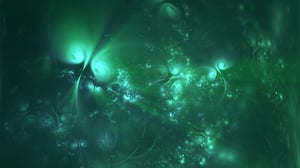Researchers at McGill University in Montreal have identified life forms capable of surviving conditions probably similar to those of life on Mars. They breathe methane and feed only on inorganic material.
In one of the most inhospitable places on Earth, in the Canadian Arctic and with conditions probably similar to those found in some place on Mars, researchers at McGill University in Montreal have identified previously unknown microorganisms that have an amazing ability to feed only on inorganic material, like sulphates and sulphides, and to breathe methane or other gases instead of oxygen.
Until now, no other living beings have been known to be able to survive according to these rules. The results of the study were published in the Nature Group’s ISME Journal.
Given the unique nature of this discovery, the European Space Agency asked to use some of the samples taken in the Canadian Arctic to refine simulations of life on Mars, and also to test the detection capabilities of the instruments that will be used in the next ExoMars mission for the presence of microorganisms.
These 'Martian' micro-organisms have been called lithoautotrophic, an adjective that describes one of their abilities: to feed on salts normally present in rocks. They were found in the Canadian Arctic, in a lake in which there is a spring called Lost Hammer Spring, under a layer of permafrost (perennially frozen ground)
The spring is almost devoid of oxygen (the concentration is less than one part per million). It has extremely high salinity (24%), previously thought incompatible with other life forms. It contains and releases a large amount of methane and is always at sub-zero temperatures, around -5°C, although it does not freeze, precisely because there is so much salt: it is the water source with the highest salt concentration ever found.
A two-year study
Researchers at McGill University began their studies in 2020, eager to clarify whether some fragments of genetic code found in previous years were just remnants of past eras or traces of life forms that were still active.
To understand this, they used state-of-the-art equipment, and managed to reconstruct the genomes of some 110 microorganisms, most of which had never been seen before.
It took two years of research on the Lost Hammer sediments (longer than any other research of this kind), because salt hampers genetic analysis when it is so concentrated, but in the end, similarities were discovered with at least two possible families of microorganisms: some Archea (intermediate forms midway between viruses and bacteria), and certain types of bacteria such as Gammaproteobacteria, which capture the smallest traces of oxygen present, and use sulphur derivatives to perform their vital functions.
Climate change and difficult living conditions: ongoing studies
Studies are continuing, and not only with Mars in mind. Even on Earth conditions are increasingly more difficult, and knowing about living species that are able to withstand situations once considered incompatible with normal life cycles could reserve many surprises. Also, some types of these microorganisms are already being studied for uses such as detoxifying water, or decontaminating materials damaged by radioactive isotopes.
Still a fairly unknown world
According to some scholars, less than 1% of the bacteria on Earth is known: in the remaining 99% are living beings whose features will probably surprise us for many years as they are discovered and noted.




